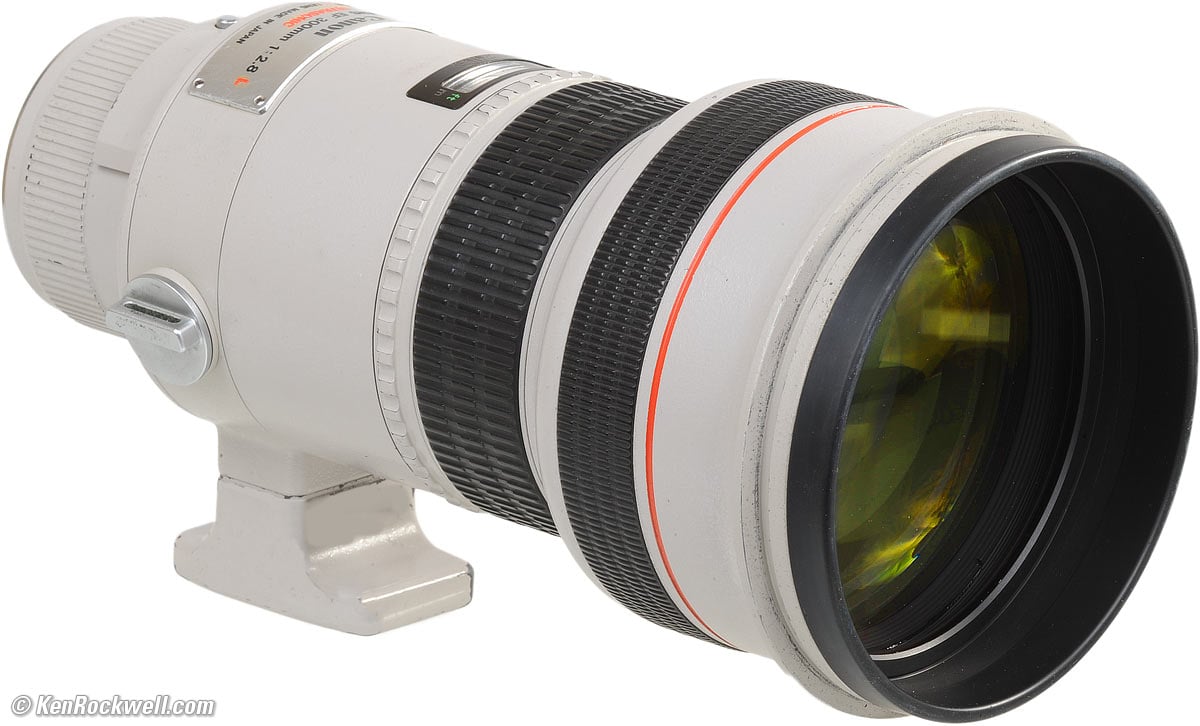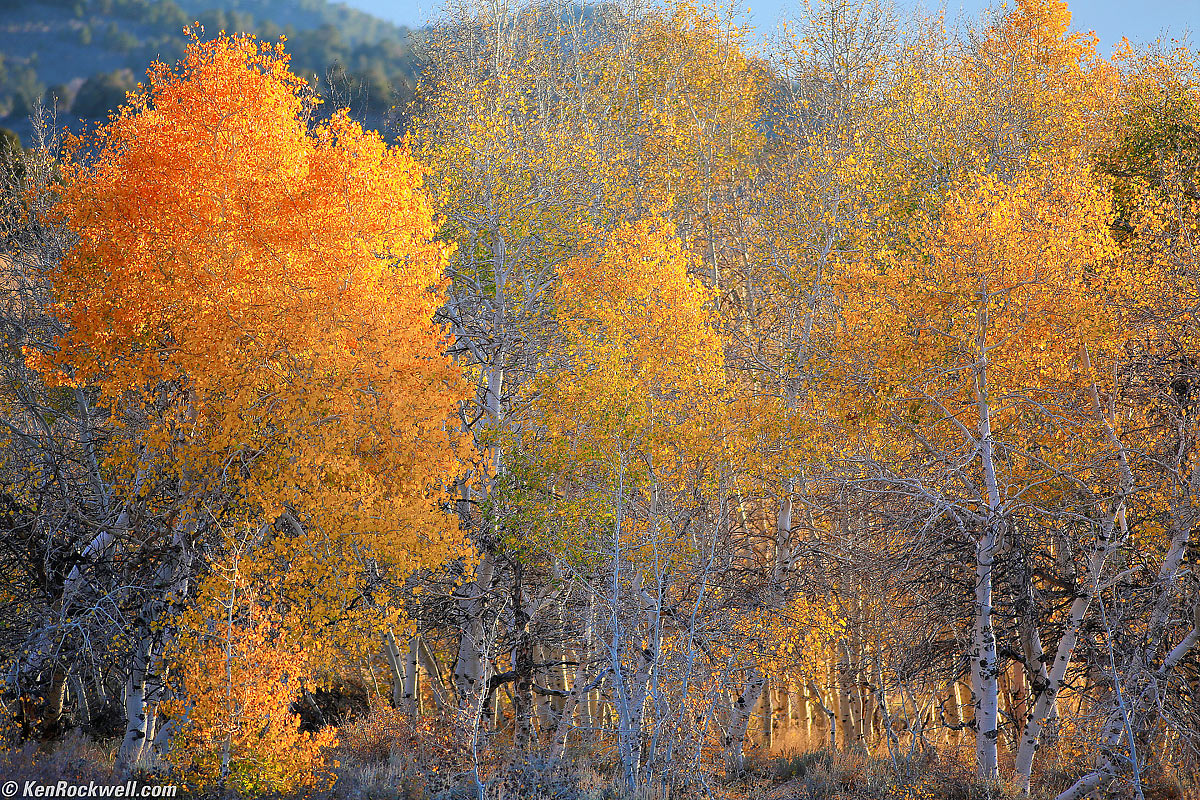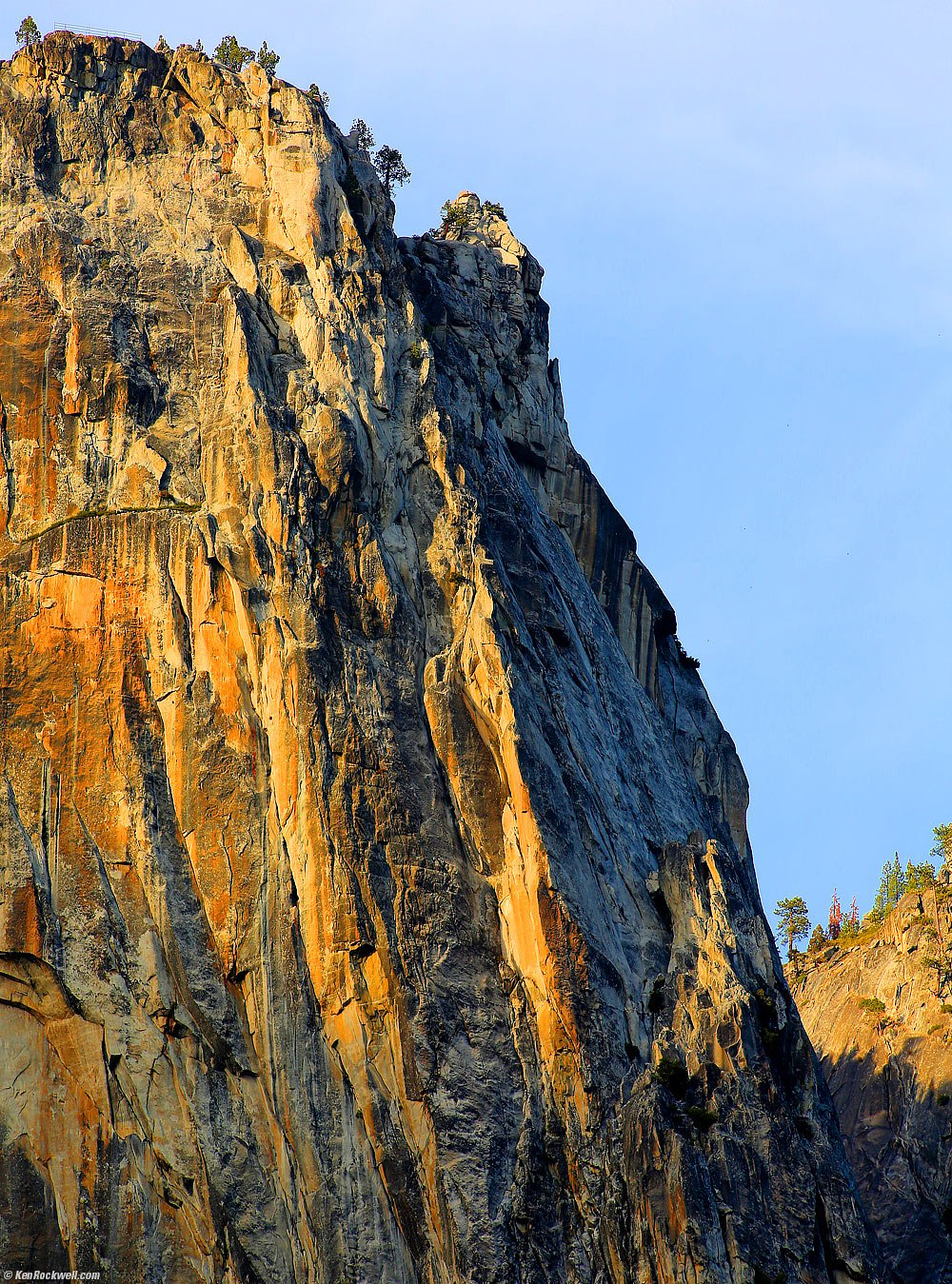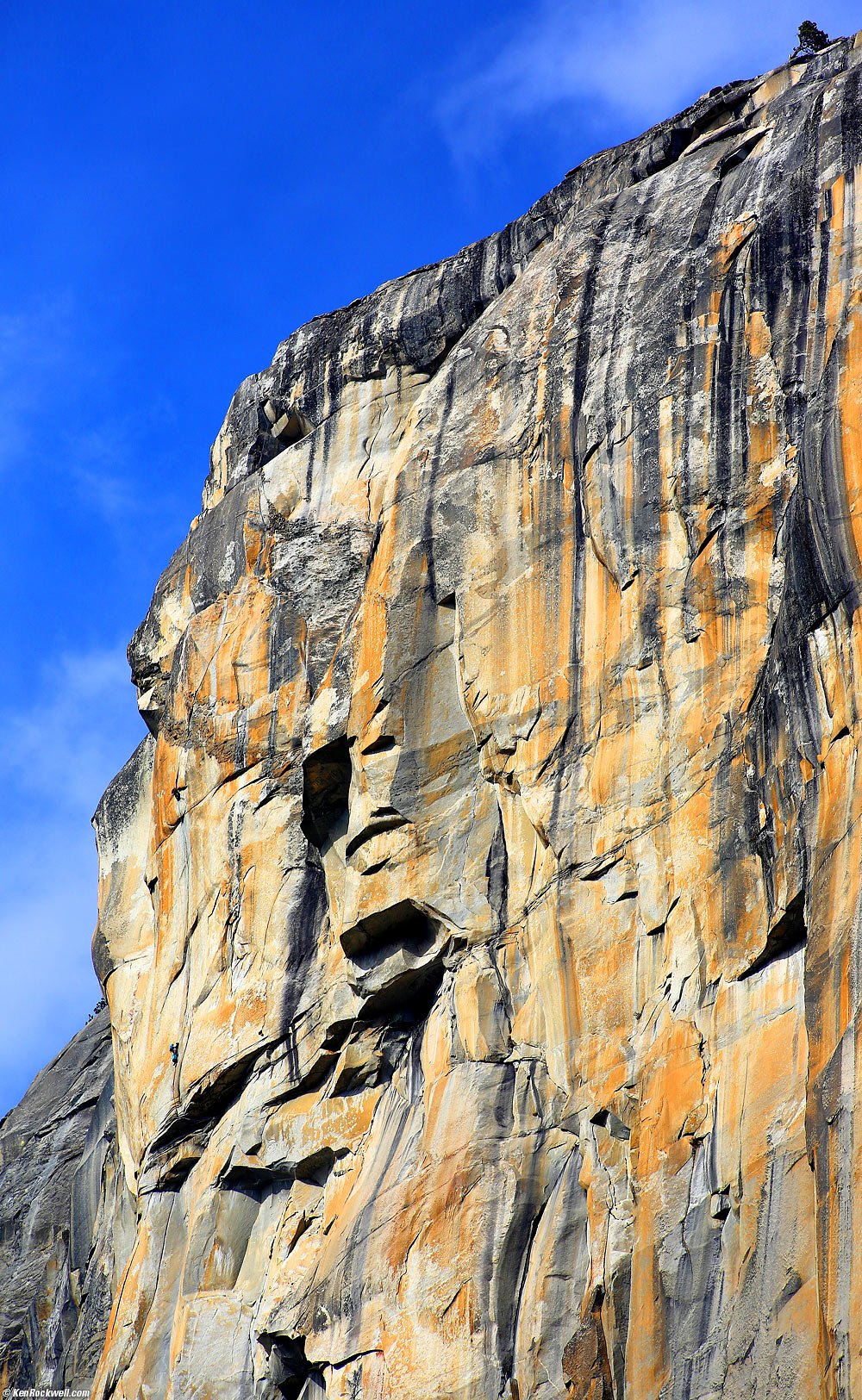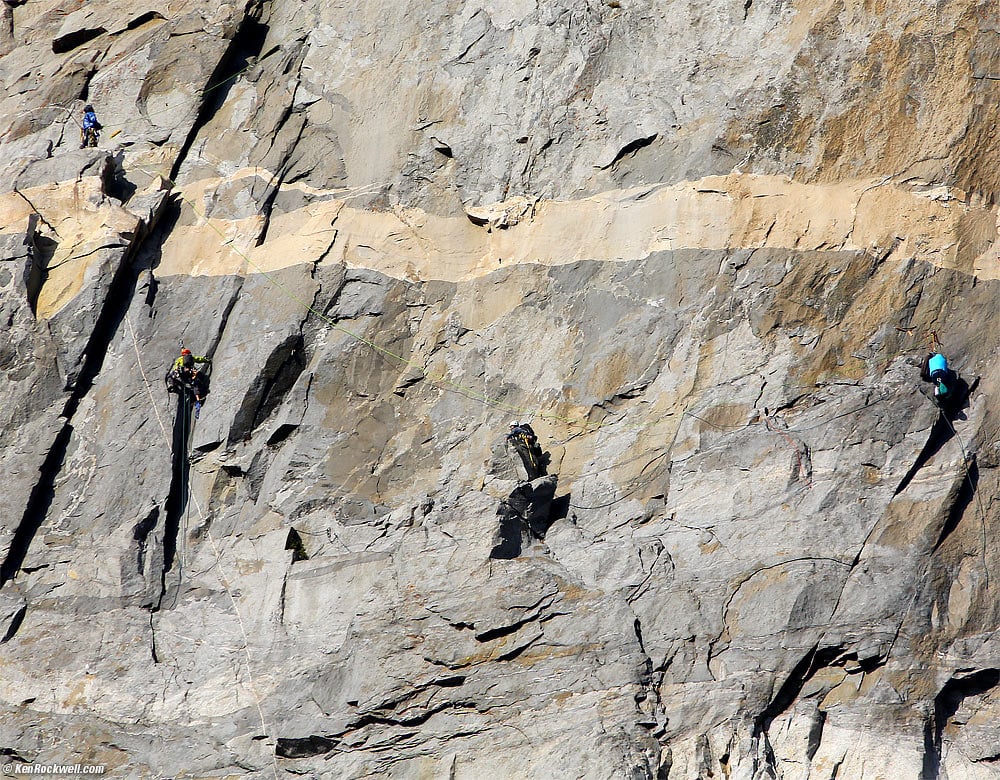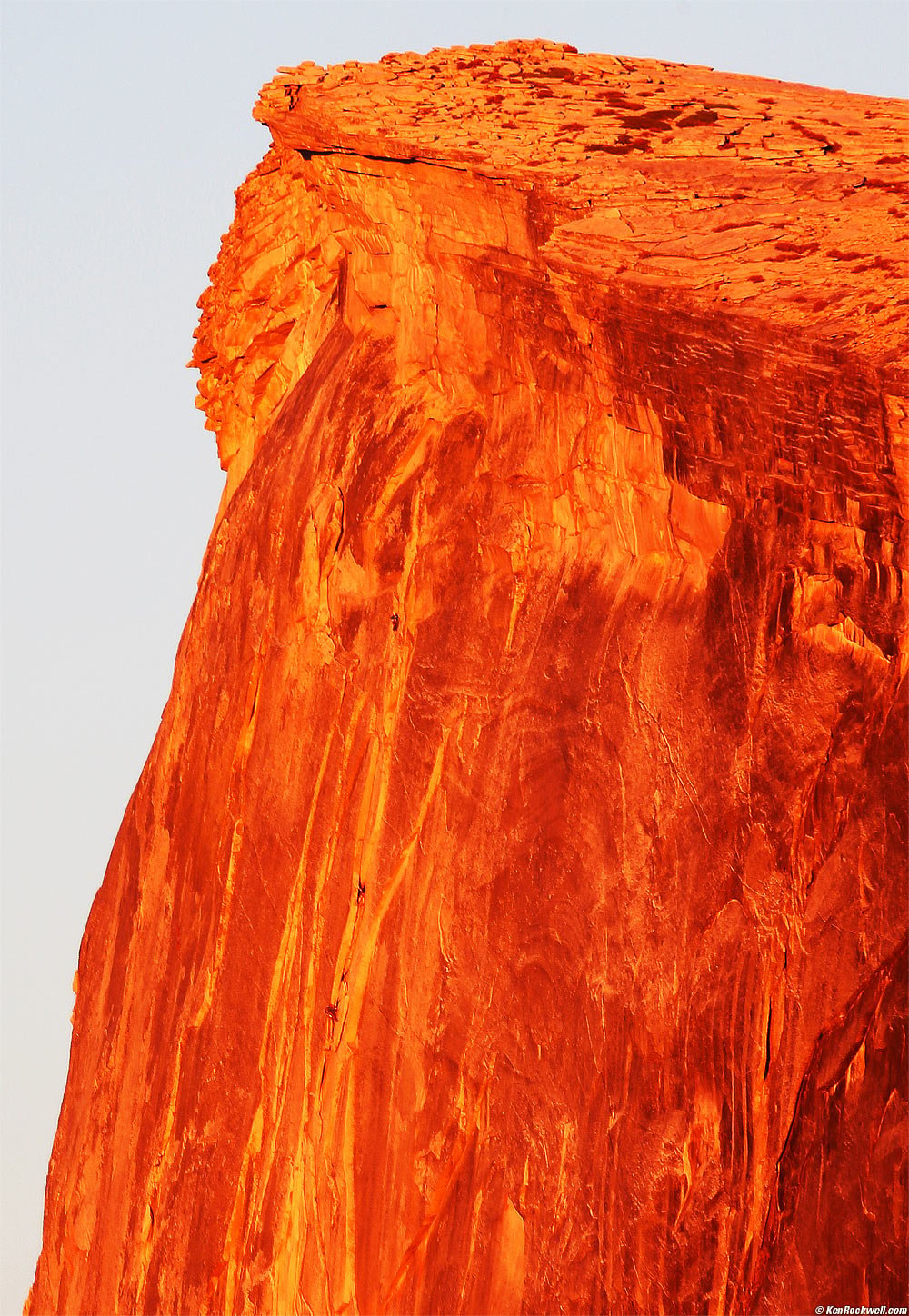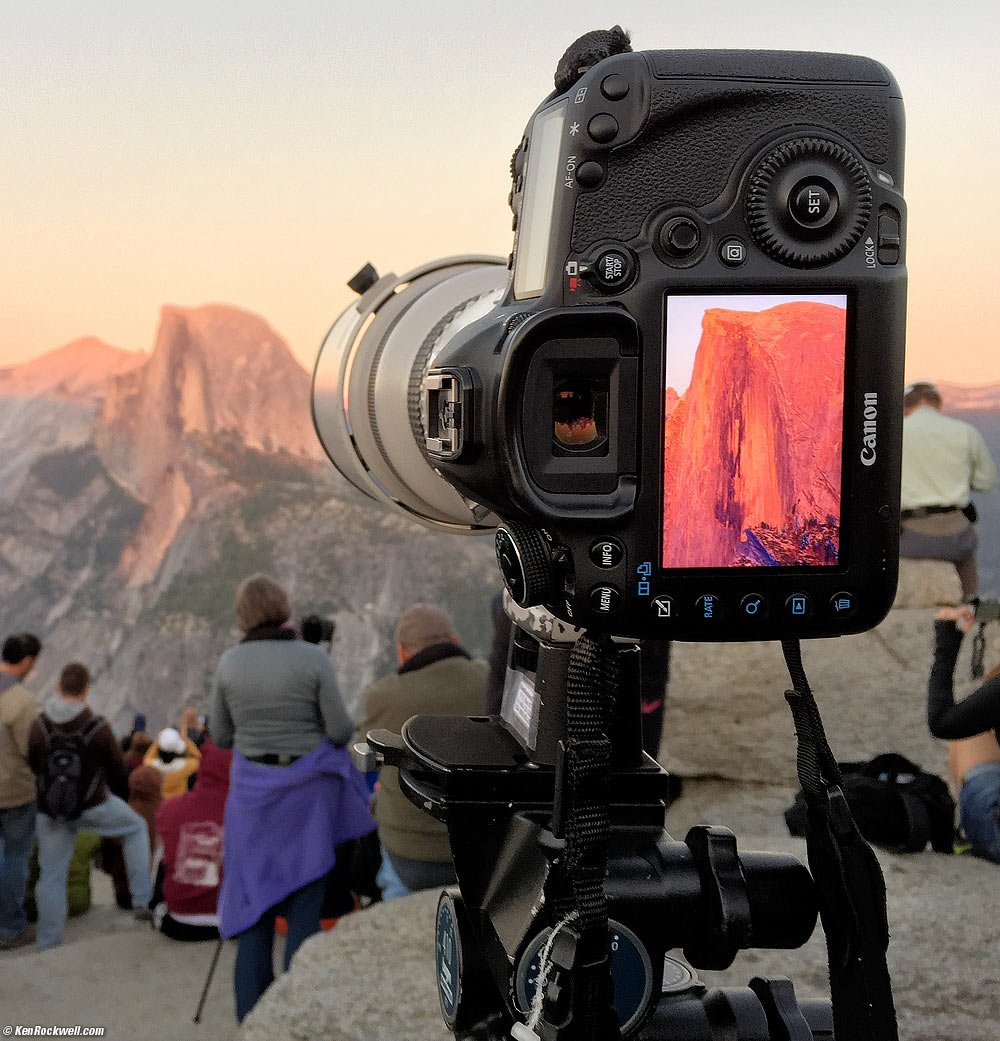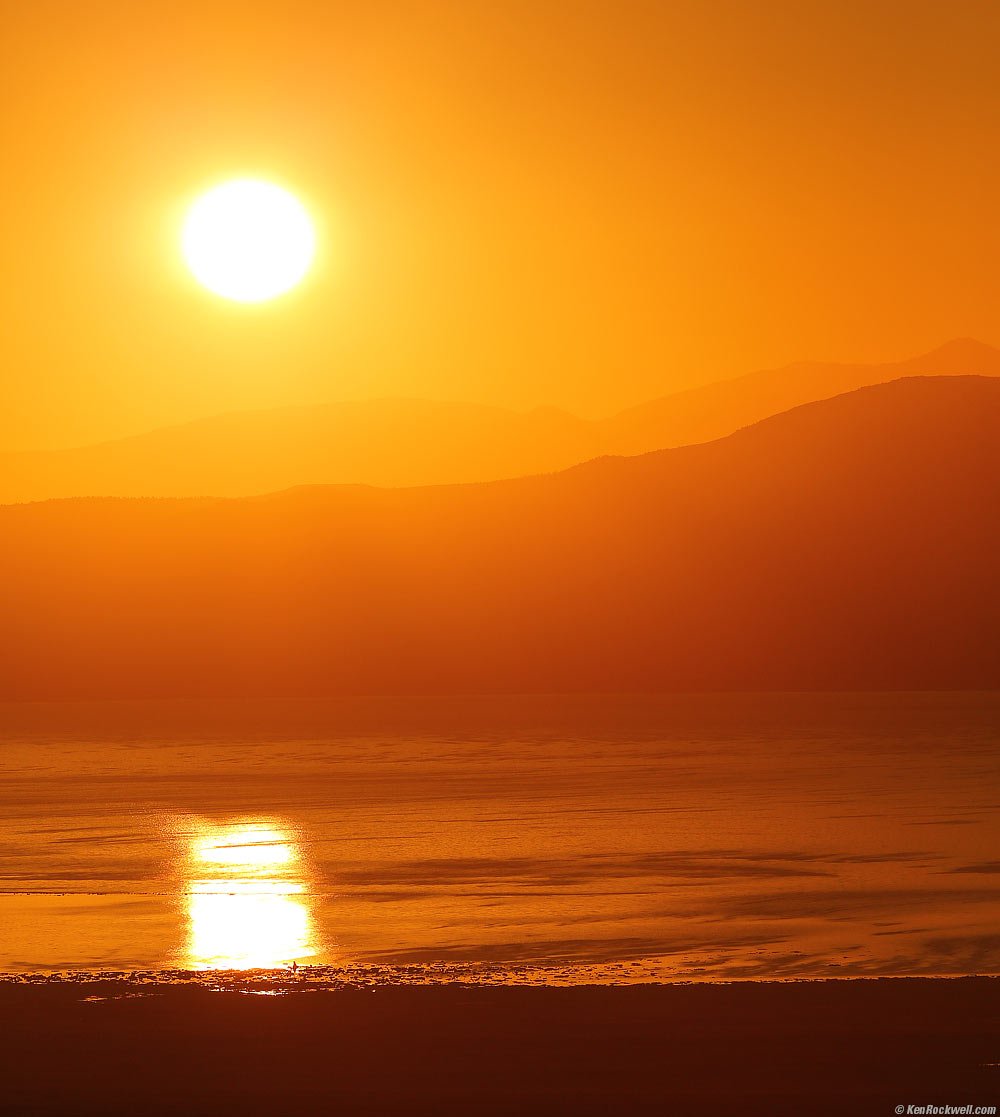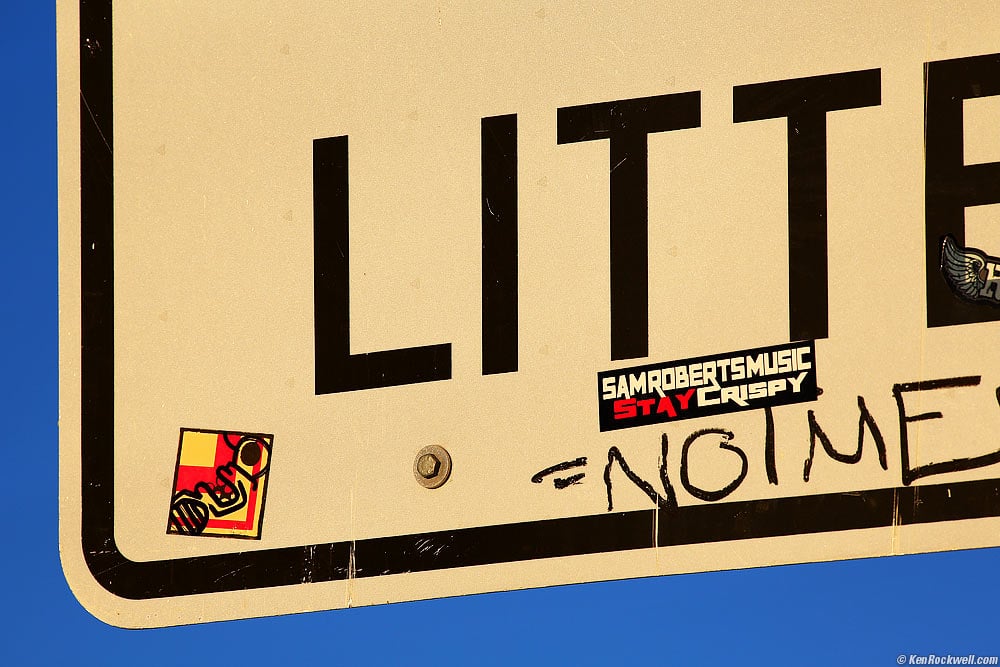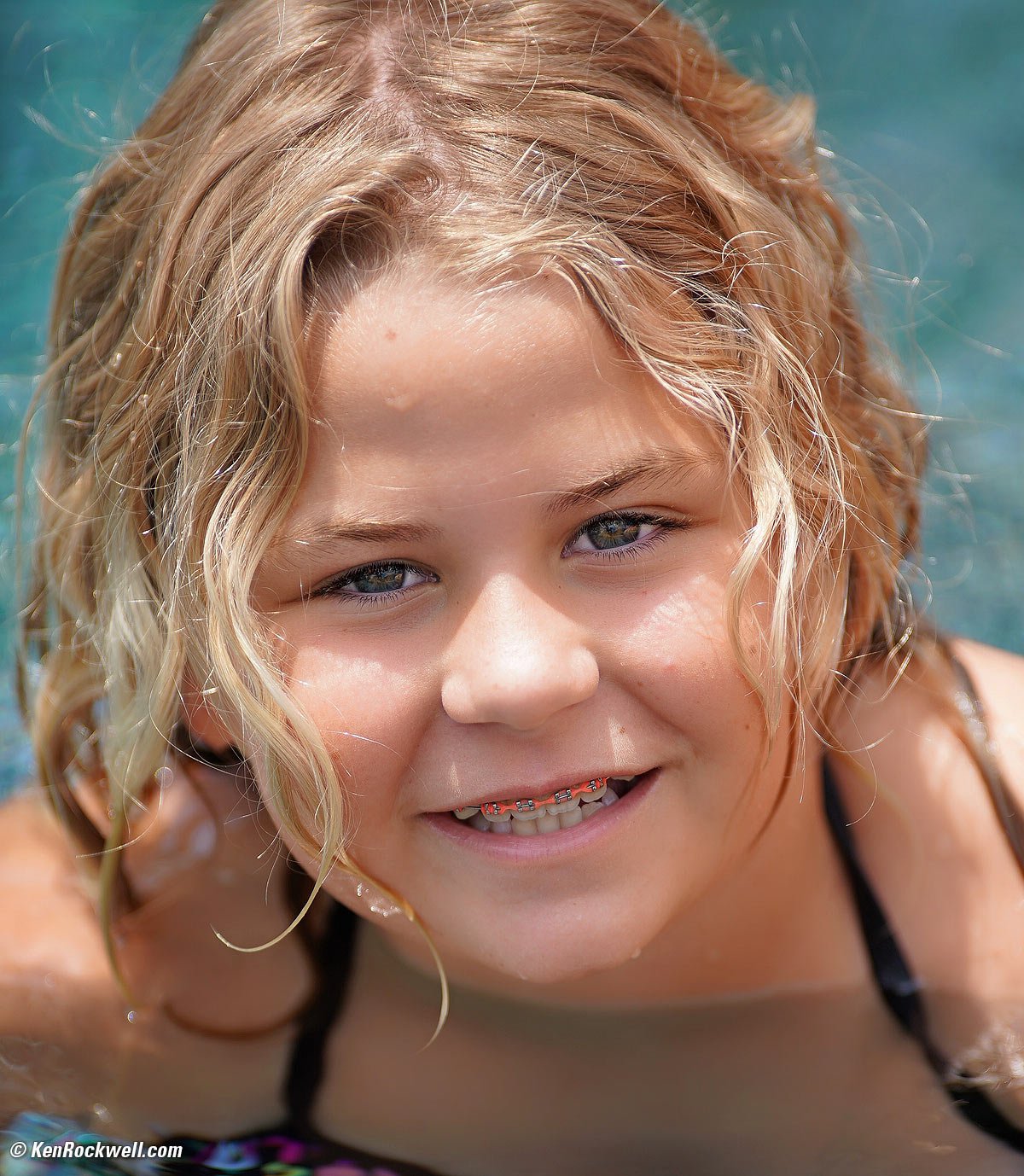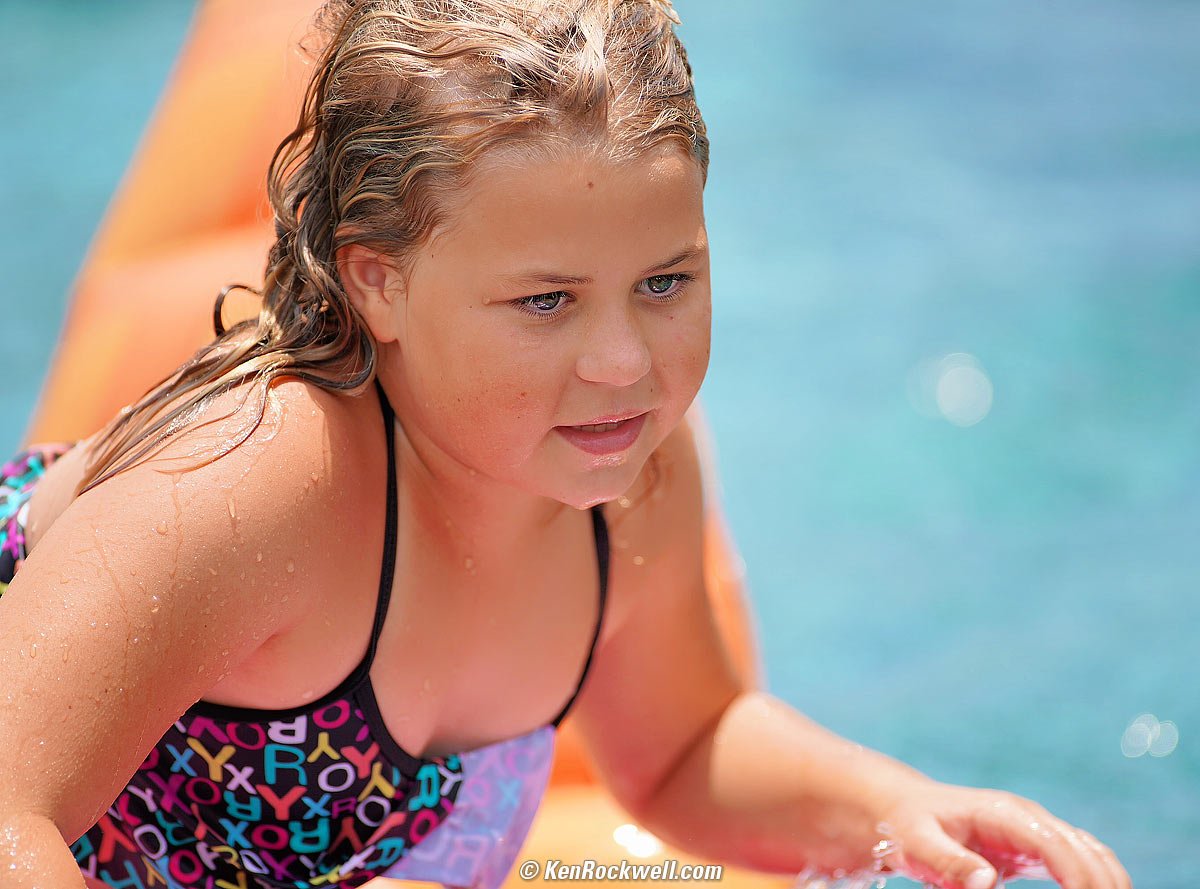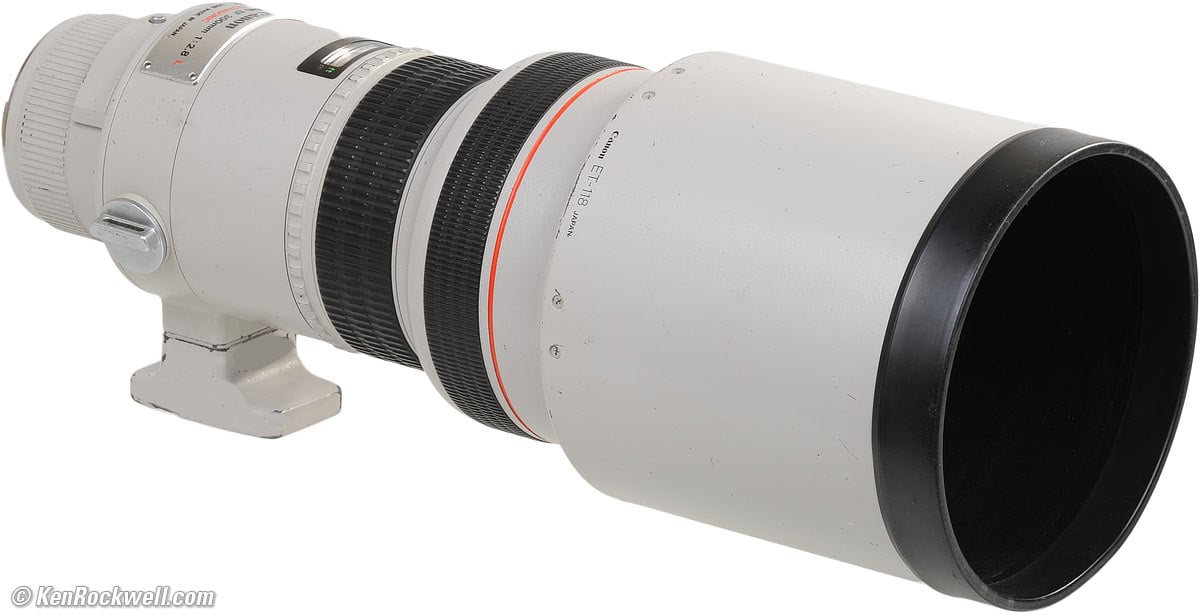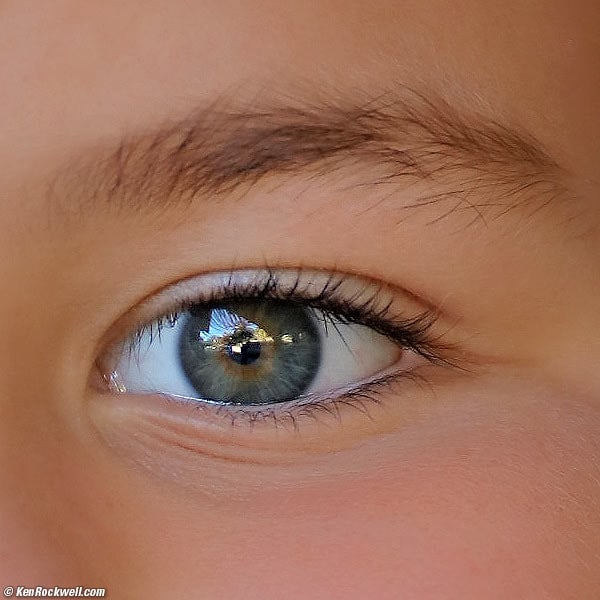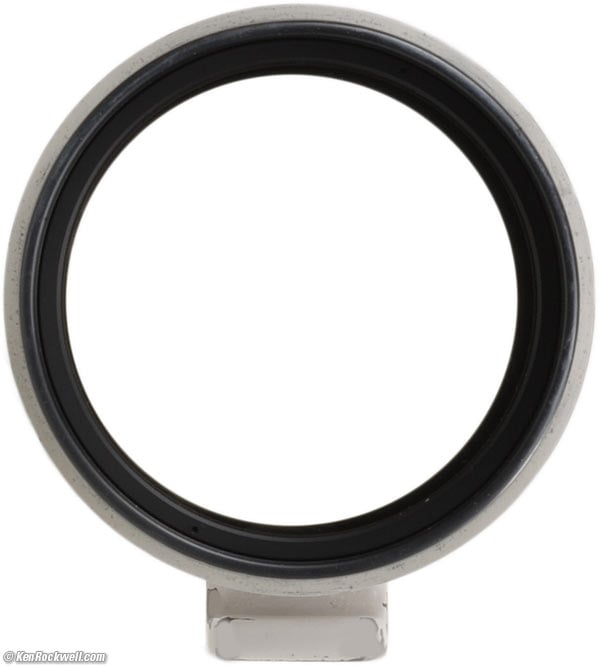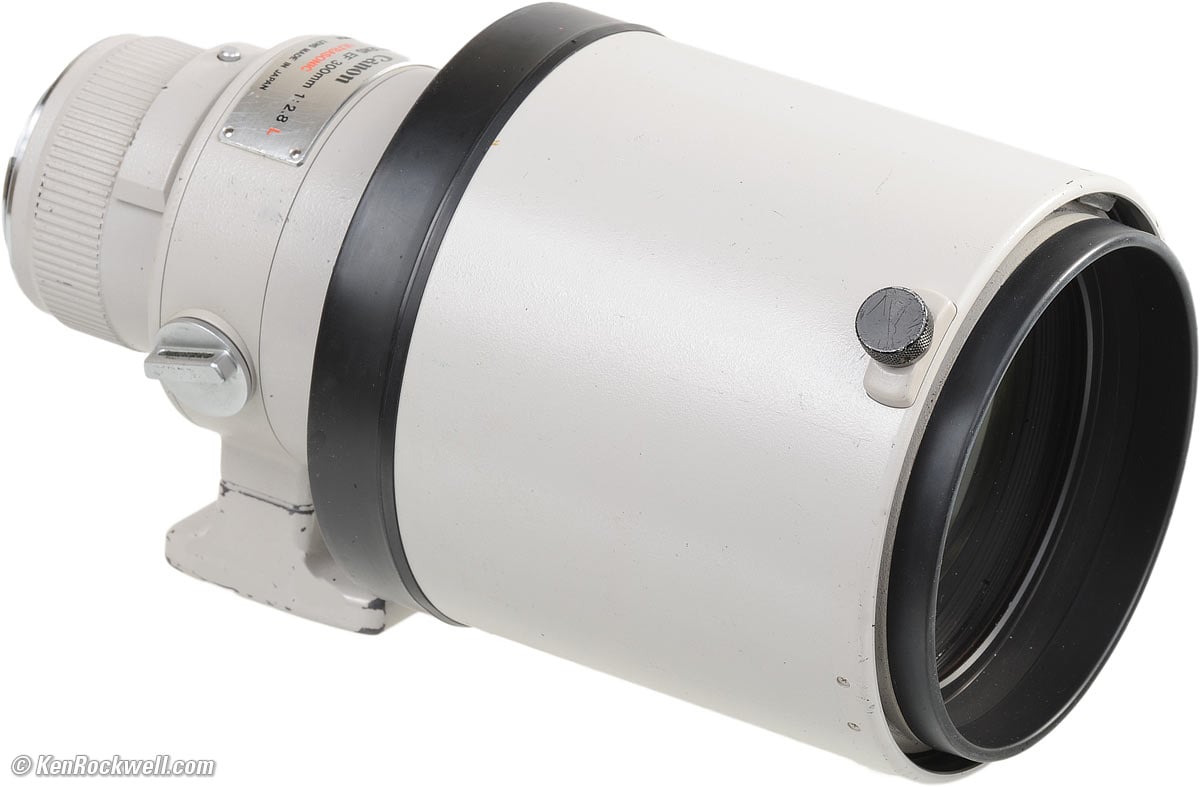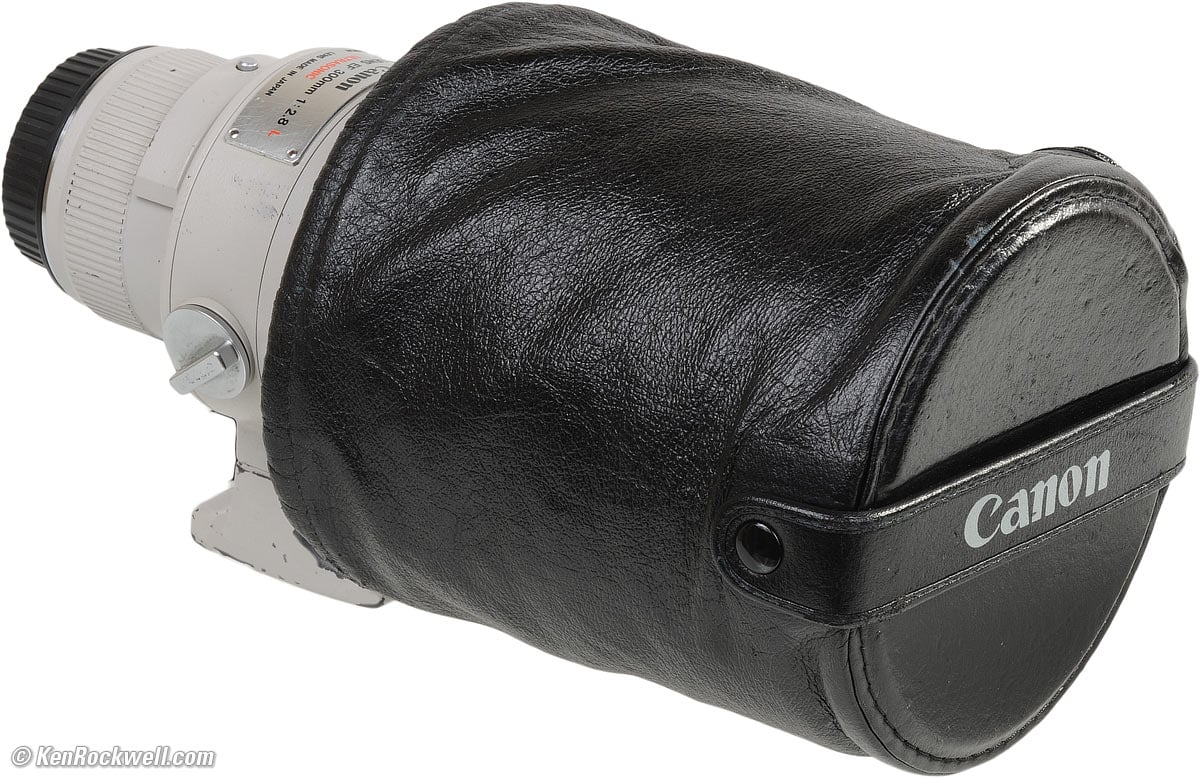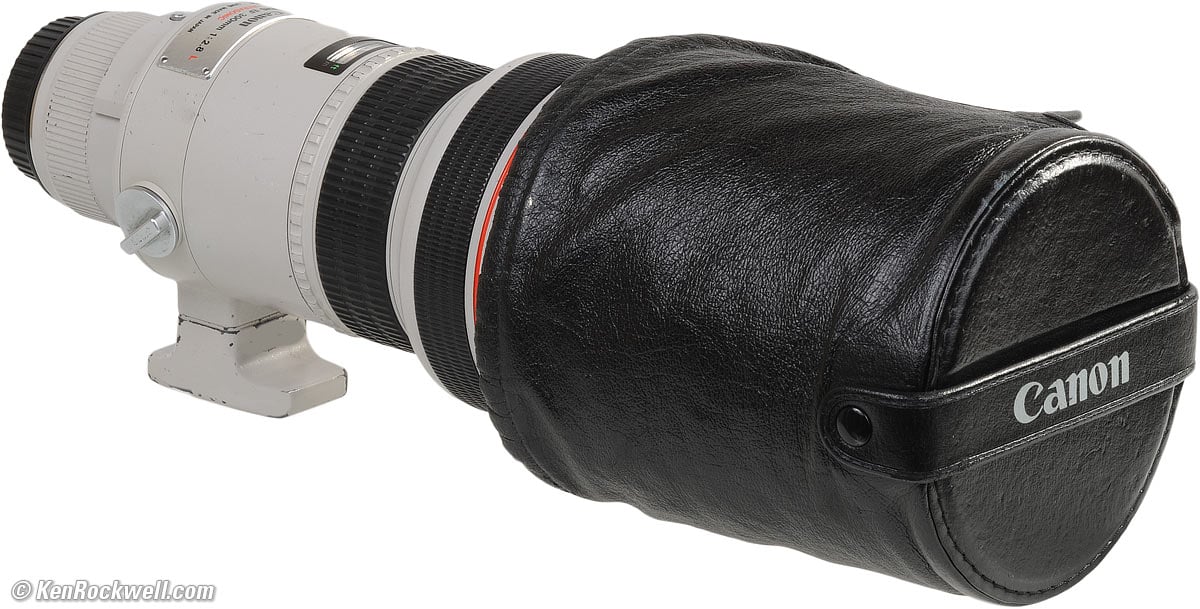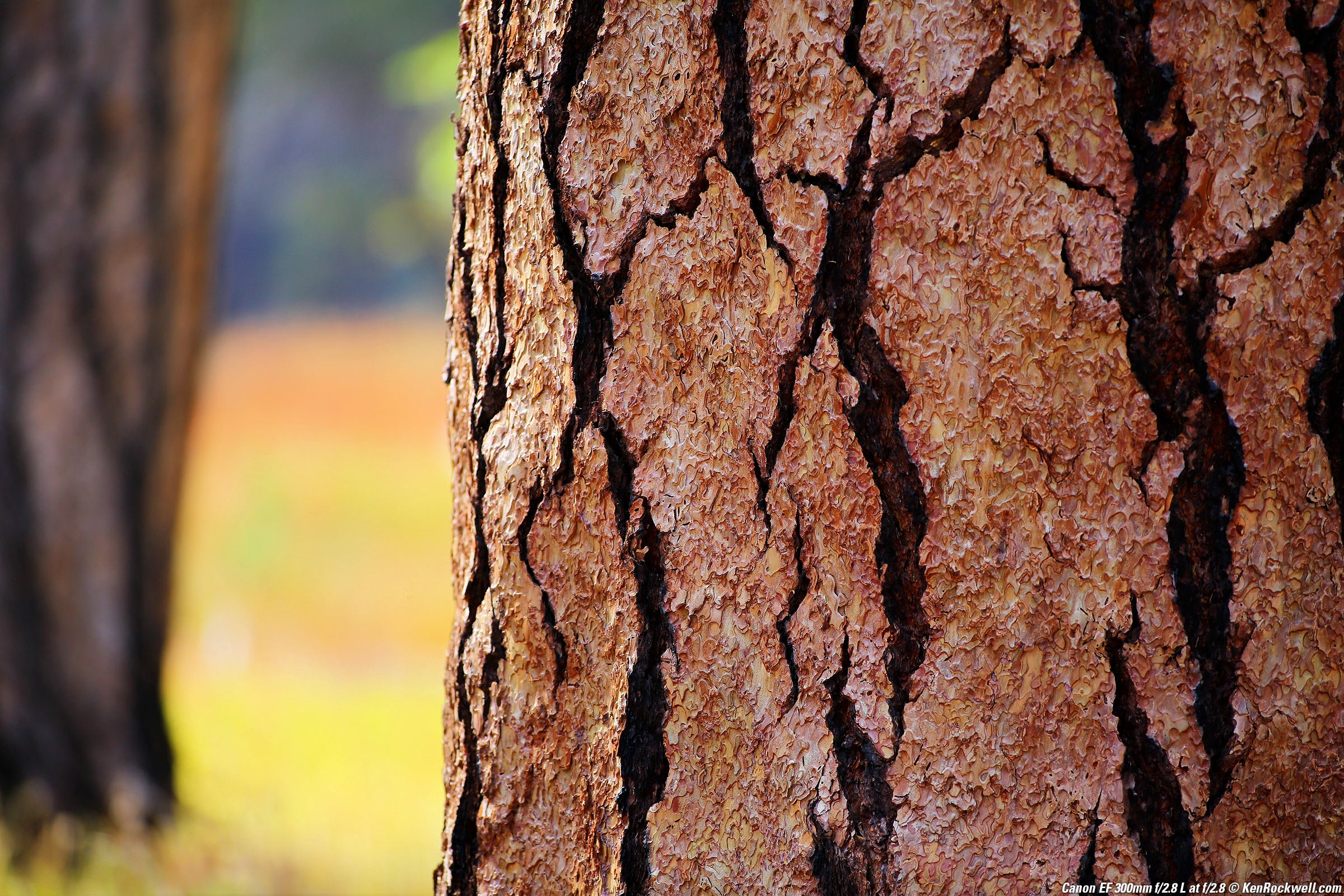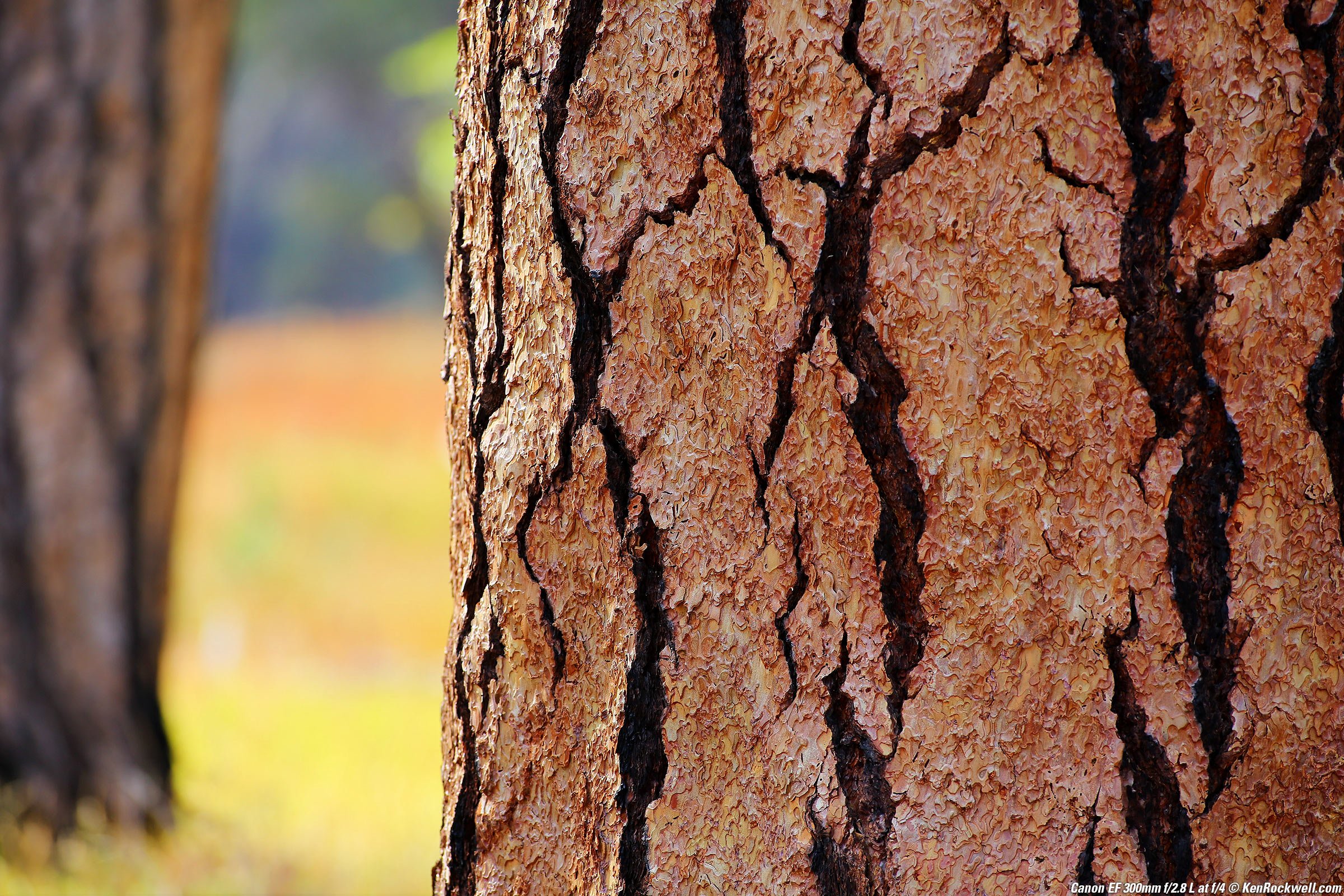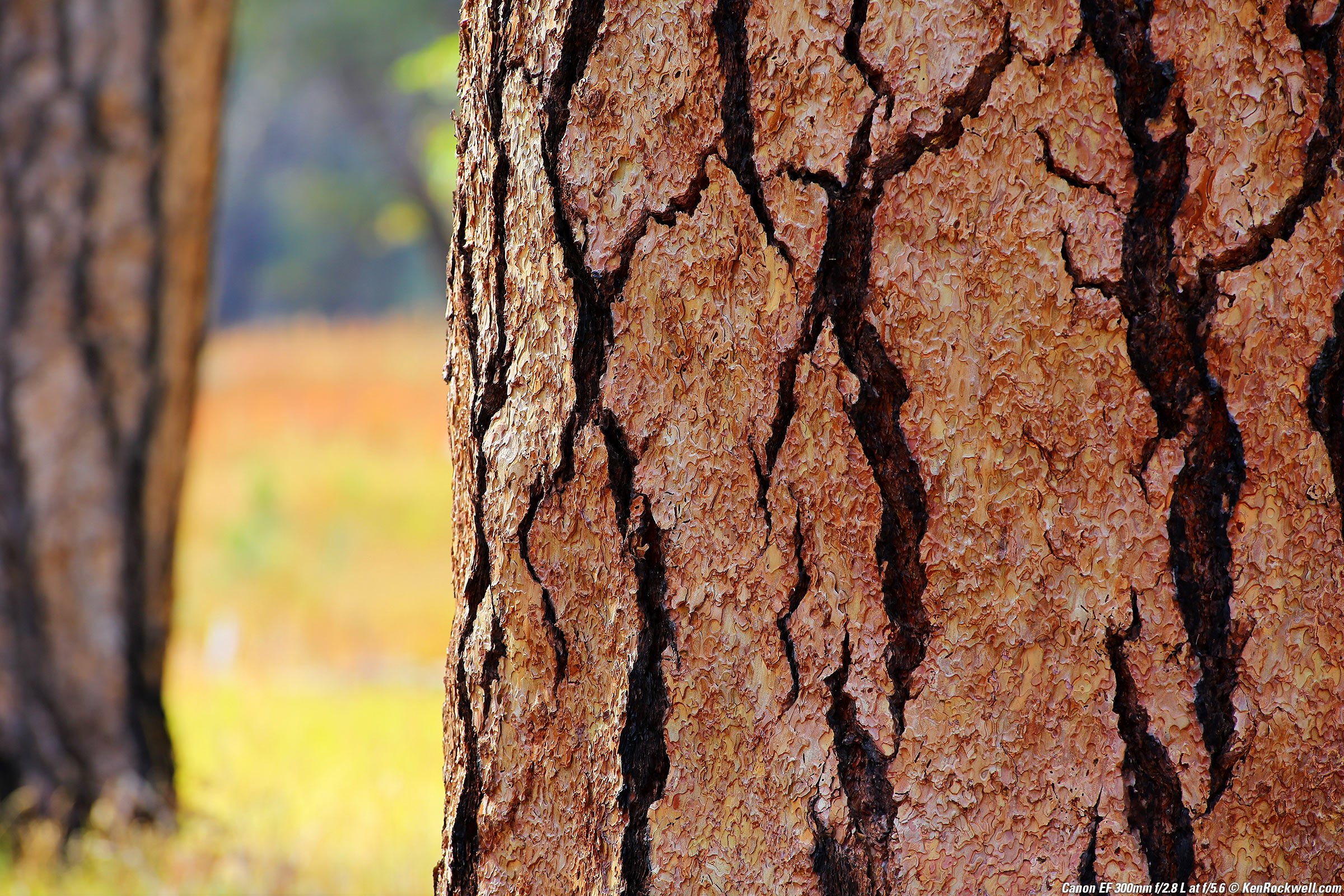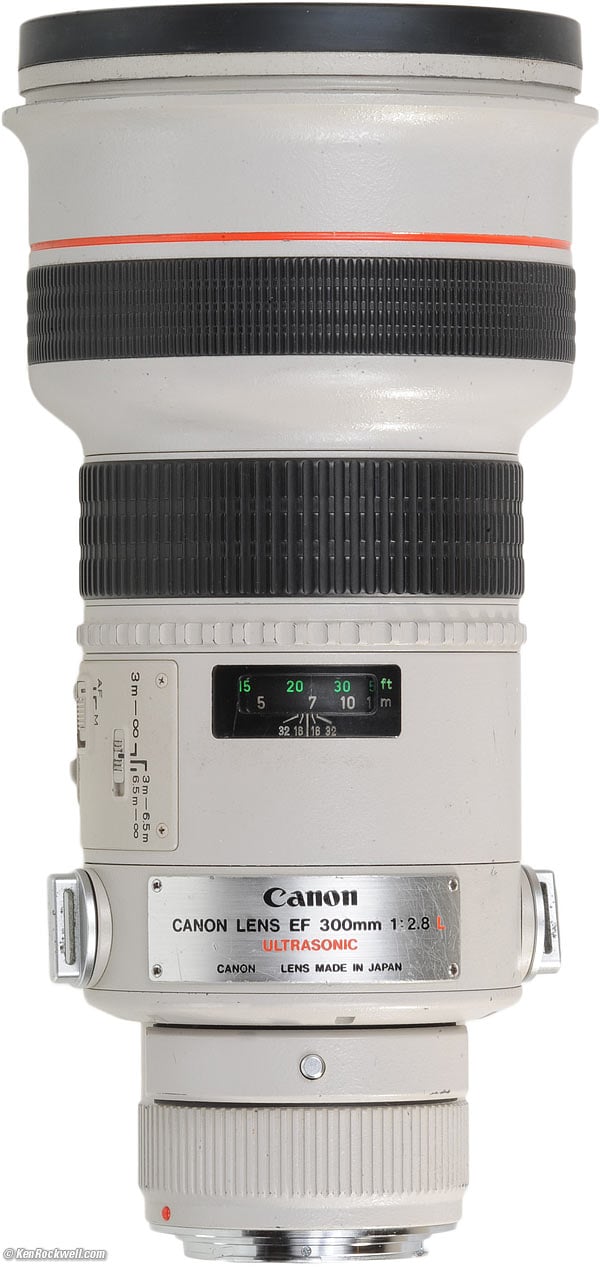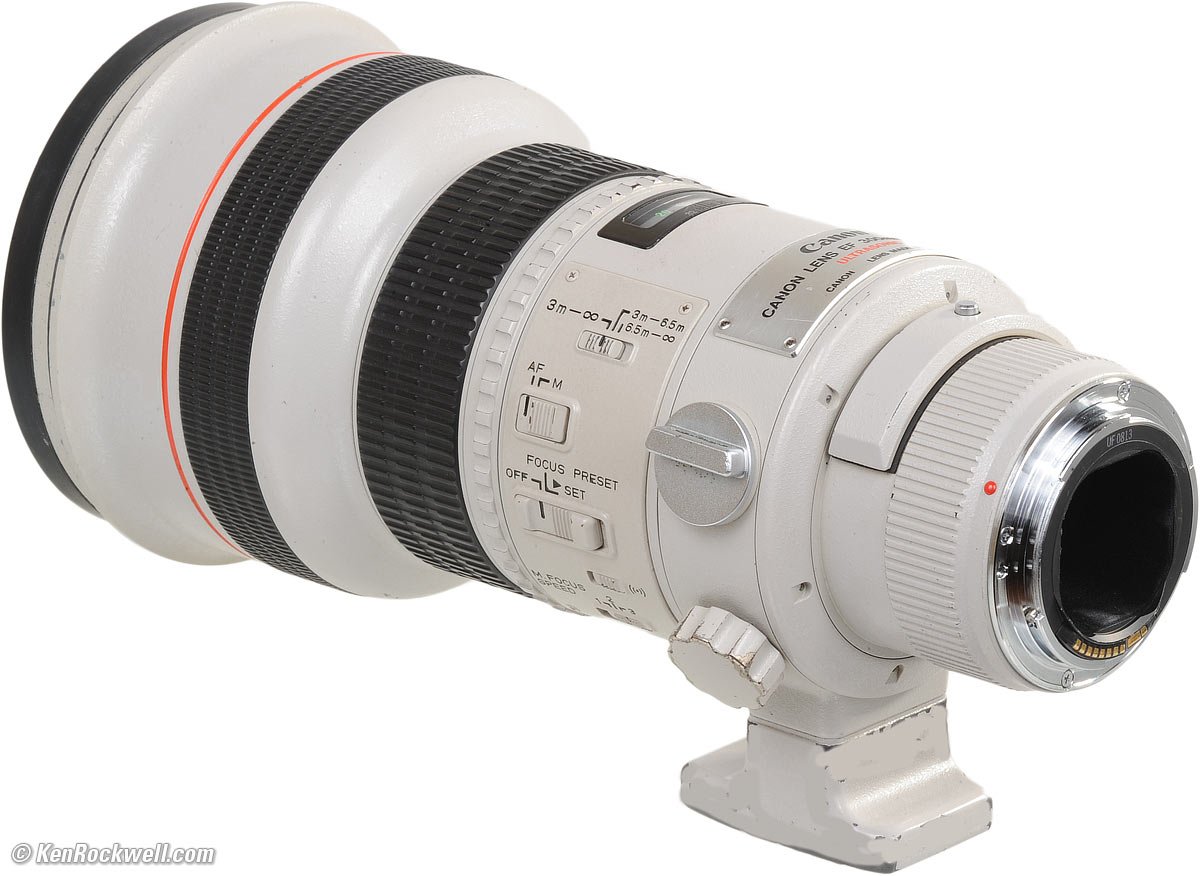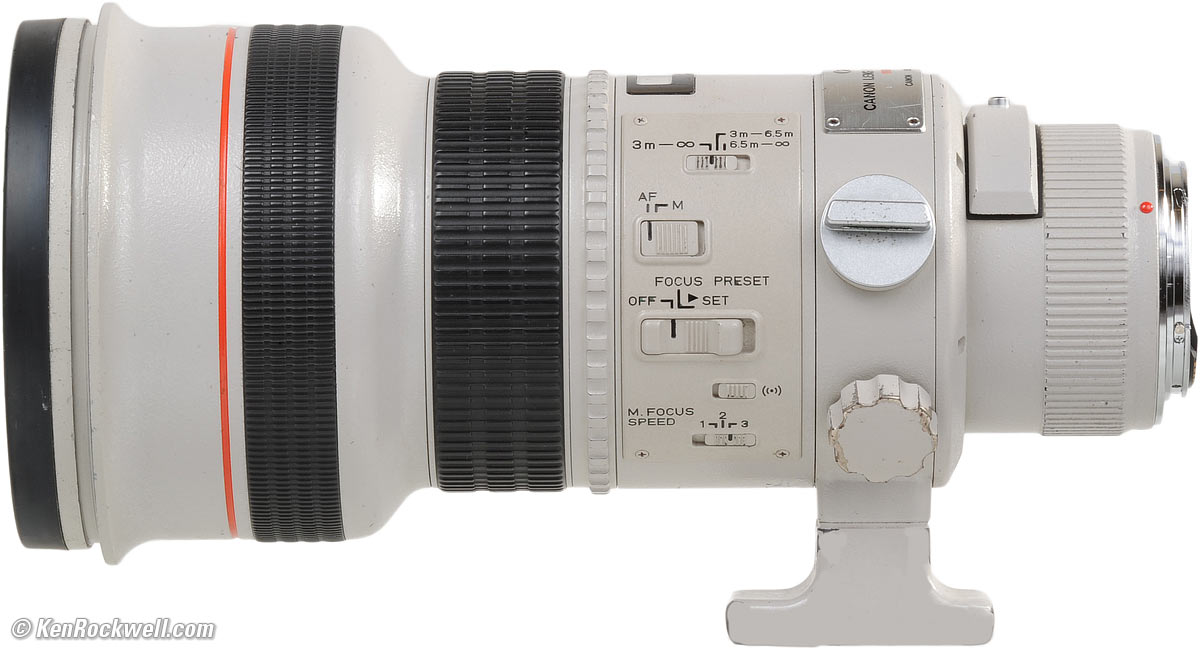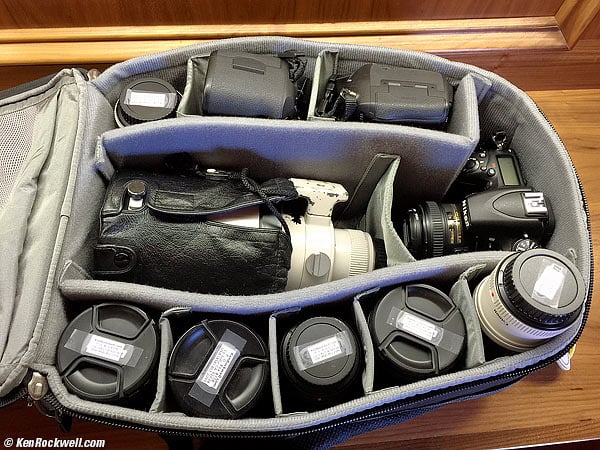Home Donate New Search Gallery Reviews How-To Books Links Workshops About Contact
Canon 300mm f/2.8 L
Fluorite EF (1987-1999)
Sample Images Intro Specs Performance
Compared Usage Recommendations More
Canon EF 300mm f/2.8 L (Full-frame, 1.3x and and APS-C coverage, 48mm drop-in filters, 100.7 oz./6.3 lbs./2,855g, 10'/3m close focus, about $1,400 used if you know How to Win at eBay). enlarge. I got mine at this link directly to them at eBay.
My biggest source of support is when you use those or any of these links when you get anything, regardless of the country in which you live. It helps me keep adding to this free website when you get yours through those links — but I receive nothing for my efforts if you buy elsewhere. Thanks for your support! Ken.
April 2023 Canon Reviews Canon Lenses Canon Flash All Reviews
Newest model: Canon EF 300mm f/2.8 L IS II adds Image Stabilization with closer focussing and less weight, for three times the price.
Why fixed lenses take better pictures than zooms
Sample Images top
Sample Images Intro Specs Performance
Compared Usage Recommendations More
Aspens at the Mine above Bridgeport, 19 October 2014, 5:49 PM. (Canon 5D Mark III, Canon EF 300mm f/2.8 L, f/2.8 (wide open) at 1/320 at ISO 100, Athentech Perfectly Clear v2.) bigger or Full resolution.
Last Light on Sheer Cliff, Yosemite, 16 October 2014, 5:16 PM. (Canon 5D Mark III, Canon EF 300mm f/2.8 L, f/5.6 at 1/250 hand-held at ISO 100, Athentech Perfectly Clear v2.) bigger.
The Face of El Capitan as Seen from El Capitan Meadow, Yosemite Valley, 17 October 2014, 2:37 PM. (Canon 5D Mark III, Canon EF 300mm f/2.8 L, f/5.6 at 1/1,000 at Auto ISO 100, Athentech Perfectly Clear v2.) bigger.
Climbers on the Face of El Capitan as Seen from El Capitan Meadow, Yosemite Valley, 17 October 2014, 2:40 PM. (Canon 5D Mark III, Canon EF 300mm f/2.8 L, Canon Extender EF 2x II and Canon Extender EF 1.4x II (equals 840mm), f/10 at 1/500 at Auto ISO 200, Athentech Perfectly Clear v2.) bigger.
Climbers on the Face of the Half Dome as seen from Glacier Point 4 kilometers (2.5 miles) away, Yosemite, 18 October 2014, 6:09 PM. (Canon 5D Mark III, Canon EF 300mm f/2.8 L, Canon Extender EF 2x II and Canon Extender EF 1.4x II (equals 840mm), f/8 (wide open) at 1/30 at ISO 100, Athentech Perfectly Clear v2.) bigger.
I cropped this a little, giving even more magnification. Half dome is a long way away; here's how it looks with a shot made at only 300mm on my LCD:
Half Dome as Captured by the Canon 5D Mark III and EF 300m f/2.8 L, Yosemite, 18 October 2014, 6:19 PM. (iPhone 6 Plus, f/2.2 at 1/30 hand-held at Auto ISO 32, Athentech Perfectly Clear v2.) bigger.
Sunrise over Mono Lake, 20 October 2014, 7:18 AM. (Canon 5D Mark III, Canon EF 300mm f/2.8 L, f/9 at 1/2,500 at Auto ISO 100.) bigger.
Sign at Conway Summit at Sunrise, 20 October 2014, 7:34 AM. (Canon 5D Mark III, Canon EF 300mm f/2.8 L, f/11 at 1/250 at Auto ISO 100, Athentech Perfectly Clear v2.) bigger.
Katie in the pool, 06 July 2017. Sony A9 with Canon 300mm f/2.8 L on Metabones Mark V adapter at f/2.8 at 1/1,250 at Auto ISO 100. bigger or full-resolution © file.
Katie in the pool. Sony A9 with Canon 300mm f/2.8 L on Metabones Mark V adapter at f/2.8 at 1/1,250 at Auto ISO 100. bigger or full-resolution © file.
Introduction top
Sample Images Intro Specs Performance
Compared Usage Recommendations More
This Canon 300mm f/2.8 is an ultra high performance telephoto lens for every Canon DSLR and 35mm EOS camera. It has spectacular optics, fast autofocus and top-notch build quality.
There is a "Focus Preset" feature which allows us to refocus to a preset distance, for instance, to home plate or the goal, with a single finger tap.
For less than one-third the price of the newest Canon EF 300mm f/2.8 L IS II, this lens is pretty much the same thing. It's just as insanely sharp with Fluorite and UD glass elements. The only difference is stabilization, weight and close focus — none of which matter much for most of the things we do with a 300mm f/2.8. Stabilization only helps when shooting still subjects hand-held, but with a 300/2.8 we're usually shooting action from a monopod or birds from a gimballed head, neither of which are helped with IS.
For over a decade this was the world's highest performance 300mm lens. For nearly ten years Nikon had nothing that could compete. Until 1996 all of Nikon's 300mm f/2.8 lenses had very slow autofocus, while this Canon 300/2.8 is super fast.
The 300/2.8 is a critical lens in any pro sports, nature or people photographer's bag, and therefore this lens has had a part in converting the pro market to Canon back in the 1990s.
The funny thing is that Canon brought this astounding lens to the 1988 Summer Olympics, but the best camera they had to show was the new EOS 620 — a consumer camera. It worked great and the autofocus was astounding, but since Nikon also just happened to show up with the new Nikon F4, Canon didn't steal away the pros as fast as it had hoped.
Nikon had an awesome pro camera, the F4, but no 300mm f/2.8 lens that could autofocus fast enough for sports until 1996. Canon showed an awesome lens, this one, but had no pro camera.
When Canon introduced their first pro AF camera, the EOS-1 in 1989, they finally had enough pieces of the pro puzzle to win the pro sports market away from Nikon, which Nikon has never won back.
This $2,100 lens is just as sharp and fast as Canon's newest $6,600 300mm f/2.8 L IS II; the only reason to buy the $6,600 version is to get image stabilization, less weight and closer focussing — but for almost everything for which we actually use a 300mm f/2.8, this ultra premium L lens works exactly the same as the newer versions!
Just grab the focus ring at any time the AF system is active for instant manual-focus override. Manual focus is motor driven; the focus ring is an encoder that tells the camera to tell the motor what to do. The camera has to be awake for manual focus to work. It works better than the other similar systems I've tried, seemingly faster than the similar system in the Canon 85mm f/1.2L II.
Manual focus runs at three different speeds as set by a switch. There's extra fast for sports, normal, or extra slow for precise focus for landscapes or with magnified Live View.
Manual-focus override can vary if you set other options on your camera, see Usage.
Canon 300mm f/2.8 L with ET-118 hood in operating position. enlarge.
Good enough for the 5DSR? Yes!
Ryan on his way to school, 01 October 2015. Canon 5DSR, Canon EF 300mm f/2.8 L, f/2.8 at 1/160 at Auto ISO 250, Auto White Balance, Standard Picture Style, +1 Saturation, -2 Contrast, Perfectly Clear V2. bigger or full resolution © file.
I had a portrait shoot the next day, snapped the kids on their way to school to check out how well my classic EF 300mm f/2.8 L works on my 5DSR. Works great!
As I keep saying, when you get a quality lens, it produces for you for decades. My 300/2.8L was introduced almost 30 years ago with the birth of the EOS system 1987.
This is shot wide-open at f/2.8.
Here's a crop from a 100% image:
Ryan's Eye, cropped from above. full resolution © file.
Not bad, especially when you realize that this is with my 5DSR sent to SMALL 1 resolution, or "only" 12 Megapixels. I shoot my portraits between 6 and 12 MP simply because 6 MP is more than enough for anything, and I can make more pictures faster.
Specifications top
Sample Images Intro Specs Performance
Compared Usage Recommendations More
Name
Canon calls this the CANON LENS EF 300mm f/2.8 L ULTRASONIC.
EF means "electronic focus;" there is an autofocus motor inside the lens.
L means as expensive as L.
ULTRASONIC means that the autofocus motor is fast and silent.
Optics top

Canon EF 300mm f/2.8 L internal diagram. Fluorite and UD Glass.
10 elements in 8 groups.
Two of these are the front protective plate and the rear 48mm filter, so it really only has 8 elements in 6 groups. One is artificial crystal fluorite and one is of UD glass.
Multicoated.
Rear-group focussing.
Focal Length
300mm.
When used on an APS-C camera, it sees an angle of view similar to what a 485mm lens sees when used on an FX or 35mm camera.
Angle of View, full frame
8.2º diagonal.
4.5º vertical.
6.8º horizontal.
Diaphragm top
Canon 300mm f/2.8 L at f/2.8. (EF diaphragm not visible).
8 straight blades.
Stops down to f/32.
Close Focus top
10 feet (3m) from the image plane.
Maximum Reproduction Ratio top
1:9.1 (0.11x).
Hard Infinity Focus Stop? top
No.
Focus Scale top
Yes.
Depth-of-Field Scale top
Sort of; only for f/16 and f/32.
Infra-Red Focus Index top
No.
Filters top
48mm drop-in rear filter holder. Also holds gel filters.
Size top
Canon specifies 4.9" (125 mm) diameter by 10.0" (253 mm) long.
Weight top
2,855 grams.
100.7 oz.
6.3 lbs.
Hood top
ET-118 aluminum alloy hood, included.
Rubber bumper around front of hood.
Reverses to stow over front of lens:
Canon EF 300mm f/2.8 L with reversed hood. enlarge.
Caps top
Fake leather front sock with velcro and drawstring closures.
The front sock covers the lens alone, or the hood in the extended position or the hood in the reversed position. Bravo!
Capped Canon 300mm f/2.8 L with hood reversed. enlarge.
Capped Canon 300mm f/2.8 L with hood in operating position. enlarge.
Standard EOS cap rear.
Tripod Collar top
The tripod collar is marvelous: a light touch on the locking knob locks or frees rotation, there is no play (wiggle) when it's loose, and there are precise click stops at 90º intervals.
The tripod collar does not come off.
There is no handle as part of the tripod mount; the foot is short.
Strap Pivots top
The tripod collar has two pivoting strap mounts.
They're nice; as you move, the pivot so your strap never binds.
Case top
It shipped new in a hard trunk roadie case.
No one uses these, so most have been thrown away. See Usage for modern-day suggestions.
Price, USA top
2023 April: about $1,400 used if you know How to Win at eBay.
2020 September: about $1,500 used if you know How to Win at eBay.
2017 July: about $1,600 used if you know How to Win at eBay.
2015 September: about $1,600 used if you know How to Win at eBay.
2014 October: about $2,100 used if you know How to Win at eBay. (I paid only $1,695 for this one over eBay back then, for instance.)
470,000 Japanese yen new in Japan in 1987. 470,000 yen was $3,300 in 1987, and with inflation, that's equivalent to $6,850, the same price as a new one today.
Performance top
Sample Images Intro Specs Performance
Compared Usage Recommendations More
Overall Focus Bokeh Coma Distortion
Ergonomics Falloff Filters Color Fringes
Mechanics Sharpness Sunstars Stabilzation
Overall performance top
The Canon 300mm f/2.8 L is extraordinary. It is among Canon's sharpest lenses; Canon pulled out all the stops to make a lens so amazing that it would convert pro Nikon shooters over to Canon. It had to be that good.
Focus performance top
Focus is entirely electronic. Even in manual focus, the lens has to be attached to a working EOS body for the lens to focus. Turn the ring when it's not on a camera or with the camera turned off, and it won't do anything.
Auto/Manual Switching
Just grab the ring anytime AF is active for instant manual-focus override.
To lock it into manual mode only, move the AF/MF switch on the lens.
Personally, I set my camera so I get manual focus when I press my AF-ON button. See Usage for details.
AF Speed
AF is fast, but remember that a 300mm lens takes longer to focus than a 200mm lens (or 70-200 at 200mm) because it has to cover the same range with much greater precisian due to the much thinner depth of field.
AF is fast, even on my EOS R6 on an EF to RF adapter.
AF Accuracy
AF is always dead-on, especially at f/2.8.
You need to have some talent here; if your AF area isn't precisely on the correct part of the subject, usually the closest eye, the AF system will focus on that other point and you'll blame the poor focus on the camera, not on yourself for not putting the AF area on the correct part of the subject.
At portrait distances the depth of field. is zero at f/2.8, so you need to focus on the correct part of the subject for a sharp photo. The lens is perfect, but you need to use it properly.
Preset Focus
Preset focus is easy to set with a switch on the barrel. It is recalled by flipping the thin white knobbed ring (just behind the rubber focus ring) in either direction.
Once tapped, the lens scoots back to the preset focus distance as fast as it can.
More at Usage.
Manual Focus
Manual focus is wonderful.
There is a switch to select your choice of three manual focus speeds.
Unlike today's crappy focus-by-wire systems on mirrorless cameras, this Canon lens is designed to be to compel professionals to switch from Nikon.
The focus ring is an encoder. It spins continuously without stops.
Bokeh performance top
Bokeh, the quality of out-of-focus areas as opposed to the degree of defocus, is marvelous.
Backgrounds get very soft and never distract. That's why the 300/2.8 is one of the top pro portrait lenses.
Here are full-frame samples. Click to enlarge:
At f/2.8. enlarge.
At f/4. enlarge.
At f/5.6. enlarge.
Coma performance top
I see no coma. It's sharp right out to the corners, even at f/2.8.
Distortion performance top
There is no visible distortion.
For more critical photogrammetric use, use a value of -0.7 in Photoshop's Lens Distortion tool to remove it for use at 3 meters (10 feet).
Ergonomics performance top
Canon EF 300mm f/2.8 L USM. bigger.
This is a surprisingly easy lens for a man to hand-hold. It's comfortable and not as heavy as a 400/2.8 which can weigh far more.
The focus ring is right where you'd want it, and your hands and fingers naturally lay over the switches on the side.
Filters pop into the slide-out holder at the back of the lens.
The focus preset really works. Set it to a reference point and tap the thin knobby white ring in either direction to return to that focus distance.
Falloff (darkened corners) performance top
Falloff is negligible. It has just a little wide-open, and it goes away by f/4.
There are no lens corrections profiles for this older lens, and it don't need any.
I've greatly exaggerated this by presenting it against a gray background. In actual photography, it's invisible.
Falloff on Full-Frame and 35mm at infinity, no correction.
© 2014 KenRockwell.com. All rights reserved. |
Filters, Use with performance top
Unmounted round 48mm glass filters snap into the little drop-in holder at the back of the lens. Gels also slip into this holder.
You should have a clear glass filter in there for proper alignment of the optics, unless of course you're using gel filters. Nothing bad will happen if you leave it empty, but the lens is optimized expecting that little piece of glass to be there.
The front flat glass plate doesn't come out. It's there so that if your lens gets hit, it will be cheaper to have Canon replace it than to replace the huge fluorite element behind it.
Lateral Color Fringes performance top
This spectacular lens has no lateral color fringes, even without a lens profile. (There are no lens profiles available for this older lens.)
This lens is so extraordinary that no lens profiles are needed. Sharpness is lost as lens profiles move pixels around; this lens is so good that its raw uncorrected results are superior to lesser lenses even after their lens correction profiles are applied.
Mechanics performance top
Rear, Canon 300mm f/2.8 L, showing UF0813 date code. enlarge.
The Canon 300mm f/2.8 L is built the way a pro lens should be: it's all alloy, with rubber bumpers on the front and both sides of its metal hood.
Hood
Aluminium alloy.
Rubber bumper on front.
Attaches with knurled metal thumb screw.
Front Lens Bumper
Rubber.
Barrel Exterior
Alloy.
Focus Ring
Rubber covered alloy.
Mount
Metal.
Markings
Mostly engraved and filed with paint.
Serial Number
Engraved into bottom rear of barrel and filed with black paint.
Date Code
Printed on rear light baffle as shown above.
Mine has date code UF0813, meaning my sample was made in Canon's Utsunomiya plant in August 1991.
Rear Gasket (dust seal at mount)
No.
Noises When Shaken
Some clunking.
Quality
Made in Japan.
Sharpness performance top
Aspens at the Mine above Bridgeport, 19 October 2014, 5:49 PM. (Canon 5D Mark III, Canon EF 300mm f/2.8 L, f/2.8 (wide open) at 1/320 at ISO 100, Athentech Perfectly Clear v2.) bigger or Full resolution.
This full resolution image should sum it up: it's super-sharp edge-to-edge, and it's shot wide-open at f/2.8! This is what makes this Canon EF 300mm f/2.8 L so extraordinary. Of course the depth of field is only about a foot at this distance, so not everything is in focus. I shot at f/2.8 to blur the hills behind and make the trees pop out from the background, while all the bark on all the trees at the focussed distance are all razor-sharp. A zoom can't do this; it won't be as sharp in the corners, and stopped down won't throw the background out of focus to make the image as three-dimensional.
The Canon 300mm f/2.8 is ultra-sharp, better than most Canon lenses.
As a very serious $7,000 lens, especially as one that Canon was using as a lure to get pro sports shooters to move over to Canon from Nikon, Canon pulled out all the stops. This L lens has a huge fluorite and another huge UD glass front element. Nikon didn't start using fluorite until 2013!
This lens is ultrasharp, especially wide-open at f/2.8, and it's ultrasharp all the way out to the full-frame corners.
Ultraspeed teles from Nikon and Canon (300/2.8, 400/2.8, 500/4, 600/4 and 800/5.6 specifically) have always been spectacular performers. This is because their makers don't have to cut any technical corners to meet a lower price, and they have fewer technical limitations than they do with main-stream zooms like the 70-200mm f/2.8s.
This 300/2.8 is better than 70-200mm zooms at 200mm because it's not a zoom. 70-200mm zooms are also superb, but this lens is even better because it's designed with fewer cost constraints and doesn't have to zoom, letting its designers optimize performance at just one focal length.
If you can't get an ultrasharp image from this lens, you're doing something wrong. It could be haze or heat shimmer in warm weather, or subject or camera motion, or the simple fact that there is no depth of field at f/2.8 at 300mm. See also Fixing unsharp images.
Here's Canon's MTF curve, which shows engineers just how nearly perfect it is:

Canon EF 300mm f/2.8 L MTF Curve.
Image Stabilization performance top
This lens has no optical stabilization, and works surprisingly well with in-body stabilization.
"Percent Perfectly Sharp Shots" are the percentage of frames with 100% perfect tripod-equivalent sharpness I get when I'm shooting hand-held while free-standing with no support or bracing. Hand tremor is a random occurrence, so at marginal speeds some frames will be perfectly sharp while others will be in various stages of blur — all at the same shutter speed. This rates what percentage of shots are perfectly sharp, not how sharp are all the frames:
| % Perfectly Sharp Shots on EOS R6 w/firmware 1.1.1 | 1/4 |
1/8 |
1/15 |
1/30 |
1/60 |
1/125 |
1/250 |
1/500 |
1/1,000 |
| R6 Internal Stabilization ON | 0 |
0 |
0 |
33 |
83 |
100 |
100 |
100 |
100 |
| R6 Internal Stabilization OFF | 0 |
0 |
0 |
0 |
33 |
50 |
83 |
100 |
100 |
I see one or two stops of real-world improvement, which is pretty good for sensor-shift stabilization with such a long lens.
Sunstars performance top
With its straight 8-bladed diaphragm, this Canon 300mm f/2.8 makes Canon-typical 8-pointed sunstars on brilliant points of light.
Compared top
Sample Images Intro Specs Performance
Compared Usage Recommendations More
See Canon 300mm Lenses Compared.
All Nikon and Canon 300mm f/2.8 lenses are superbly sharp, and all Canon's focus miraculously well. The Canons all look the same from more than two feet away and are about the same size.
Nikon and Canon have both been making superb 300mm f/2.8 lenses since the manual focus days of the late 1970s; these AF lenses are all optically perfect.
Nikon's first 300/2.8 lenses had manual or horribly slow autofocus. This is why pros switched to Canon in the 1990s. Nikon's first 300/2.8 with autofocus as good as this lens was the 300mm f/2.8 AF-S of 1998! (See also Nikon 300mm f/2.8 history.)
The newer Canon 300mm f/2.8 L IS (1999-2011) adds image stabilization, weighs 305 g. (10.7 oz.) less and focuses to 2.5m (8') instead of 3m (10').
The newest Canon EF 300mm f/2.8 L IS II weighs 200 g (7 oz.) less than the first IS version and focuses even closer, to 2 meters (6.6').
For Canon, all you have to ask yourself among the three versions is if you want image stabilization and how much weight or close-focus bothers you.
Image stabilization only helps eliminate the need for a tripod, and only for subjects that don't move. If you're shooting any kind of action, IS doesn't help. If you use a tripod, monopod or gimballed mount, you turn off IS as well. For a 300mm f/2.8 lens, IS is more of a feature bubbled-up from amateur lenses that doesn't serve much purpose except if you're hand-holding and photographing things that don't move. For most uses, even this oldest non-IS version is all anyone needs.
Close focus? Do you really need to get closer than 10 feet (3 meters) with a 300mm lens? You only fit a subject field of 216 x 324mm (8 x 12") at 10 feet, so only if you're photographing smaller things do you need to get closer.
I find this original 300/2.8 to be lightweight, since I'm used to my huge 400mm f/2.8 Nikon. If you want lighter weight, sure, spend more on the newer lenses.
Therefore, I find this original 300/2.8 to be all I need. The IS lenses are great if you're shooting birds hand-held, but as soon as you put this on any kind of support and so long as you don't need to focus closer than 10 feet, I see little reason to spend on newer lenses.
Usage top
Sample Images Intro Specs Performance
Compared Usage Recommendations More
Hand-Holding
This is easy for a man to hand-hold.
Even better, since all the weight is concentrated at the front, that and the weight of the camera body at the back have such a great moment of inertia that the whole thing is self-stabilized!
I can hand-hold this lens at much slower speeds than you'd think; not having IS isn't a problem.
Canon 300/2.8L. enlarge.
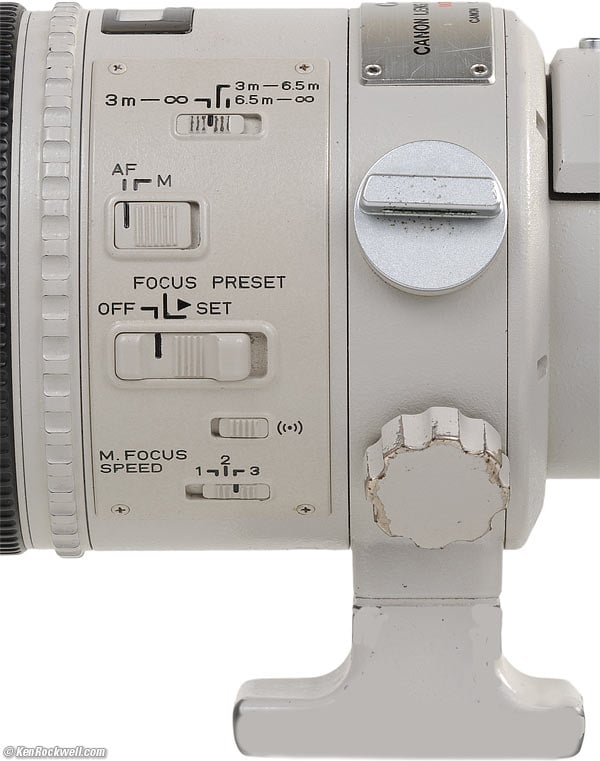
Controls, Canon 300mm f/2.8 L.
Focus Range Limiter
The top switch defines the range over which the lens will focus. It affects both auto focus as well as the manual focus range, so you ought to leave it in the full (3m-∞) range if you're primarily using manual focus.
If your conditions are causing to the lens waste time "hunting" for focus at irrelevant distances, select either the far (6.5 meters/21 feet — ∞) or near (3-6.5 meters/10-21 feet) near range and you may improve its performance.
I never need this, I always leave it in the full (3m-∞) position.
AF — M
AF is autofocus, and manual override also works.
M is manual focus only.
Manual Focus Override
For instant manual focus override, just turn the manual focus ring anytime AF is active, which is usually anytime the shutter is half-pressed.
In AF mode, the manual focus ring only works when the AF system is active. In other words, for instant manual focus override, keep the shutter pressed halfway or press the camera's AF-ON button as you turn the ring.
In M mode, the ring works any time the camera is awake. The meter need not be active, but the camera does need to be awake. This means that manual focus works for about two minutes after you last touched the shutter button, in manual focus mode.
I prefer to program my 5D Mk III's AF-ON button to "AF off" ( Menu > CFn > Custom Controls). I leave my lens in AF all the time. Pressing AF-ON locks focus in while AF, and then turning the focus ring gives me manual focus. In other words, I now get to MANUAL by holding my reprogrammed AF-ON button, which also serves as an AF LOCK if I don't move the focus ring. The AF-ON just became my MF ON button.
There are some specialized menu options in the newest Canons especially for this lens' focus system. Look for the "USM lens electronic MF" option in the AF menus and you can set this as you like.
FOCUS PRESET
This lets you return to a preset focus distance with a short twist of the thin white knobby prefocus recall ring. This ring is between the big focus ring and the control panel.
Focus Preset works in both autofocus as well as manual focus.
To use it:
1.) Focus on your reference point, like home plate or your bird feeder.
2.) Slide and hold the Preset Focus switch back towards > Set for a moment. If you slide the small beeper switch below it to the beep position, you'll hear a short confirmation beep as you save the preset distance.
3.) Leave the switch at the FOCUS PRESET position and shoot as you normally would.
4.) If you want the lens to focus to the preset distance, simply tap the thin white preset focus recall ring in either direction, and the lens' AF motor will fly the focus distance to the preset distance pronto. If the beeper switch is on, you'll hear two short beeps to let you know it's focussing to the preset distance.
The focus preset system does nothing unless you move the Focus Preset ring. If you want the lens to ignore any movement of that ring, slide the Focus Preset switch to OFF.
The preset distance is saved while the camera is off.
If you remove the lens from your camera, the preset distance is set to the distance to which the lens was focused when it was removed from your camera.
((•))
This turns the focus preset beeper on or off.
M. FOCUS SPEED
This sets the manual focus speed.
Unlike almost all other lenses, this thoroughly professional instrument lets you select three different speeds.
Slow, or position 1, is for use with magnified Live View for very precise focussing on a tripod.
Position 2 is the normal position.
Fast, or position 3, is used for sports where you might use manual focus override not for actual focus, but to move the lens quickly to the rough distance from which you'll let the AF system take over and track or focus on the subject. You'd do this if the subject is so far away from the currently focussed distance that it might take the camera a while to figure it out, since it would be so far out of focus.
The focus ring turns this far to cover the full focus range:
Position |
Turn the ring this far to cover the complete focus range: |
1 (slow) |
540° |
2 (medium) |
270° |
3 (fast) |
135° |
Caps and Cases
If you've lost the original front cap, try a Canon LP1319 pouch. You may already have one of these; it's included with lenses like the 16-35mm f/2.8 II.
I'd throw the original roadie trunk case away. No one uses these.
For a basic padded sleeve, try the LowePro 13 x 32 cm case.
Think Tank Airport Commuter.
For a professional backpack that holds this lens, a few bodies and several other lenses, I use the Think Tank Airport Commuter.
Teleconverters
This 300/2.8 also works with the 1.4x extender to make it a 420mm f/4, and the 2x extender to make it a 600mm f/5.6.
Feel free to use any of the original converters, the -II or the current -III versions. They all work, although the current -III versions may not work on 35mm EOS cameras other than the EOS 1V. They certainly all work on all Canon DSLRs.
I tried my 300/2.8 with my 1.4x II and 2x II extenders, as well as with both of them at the same time.
Performance with the 1.4x II is great. It makes this a 420mm f/4, and it's just as sharp and fast to focus.
Performance with the 2x II is very good, making this a 600mm f/5.6. It's almost as crazy-sharp as the basic lens, and focuses very quickly if it doesn't have to change the distance that much.
Two Teleconverters at the Same Time
Both 1.4x and 2x converters together make this an 840mm f/8, which shoots and autofocuses fine on my 5D Mk III.
There is so much magnification that in hot weather with heat shimmer the AF system may hunt a bit as the image floats around (that's a fault with the living atmosphere, not the lens).
The only gotcha is that the camera and EXIF data ignore the extra 1.4x converter, reading as if it's still a 600mm f/5.6.
I wouldn't use both converters together all the time, but if you really need it, it actually works just fine. Bird photographers do this a lot — but they're crazy in the first place.
Used with the 1.4x II and 2x II is a little green/magenta lateral color. If you notice it, it cleans up in Photoshop's Lens Correction Filter with +45 in "fix green/magenta fringe."
Recommendations top
Sample Images Intro Specs Performance
Compared Usage Recommendations More
I'd love to own the newest Canon EF 300mm f/2.8 L IS II since it weighs less, focuses more closely and adds Image Stabilization for hand-held use, but since I don't use this lens that often, I'm overjoyed with the performance with this classic 300mm f/2.8. Its optics, mechanics and utility are absolutely stelar.
This lens is so stable, with most of its weight at the front, that I don't miss Image Stabilization, and I DO like not having to hear the stabilization system hiss and wiggle my image around as it turns on and off in newer lenses.
If I shot a 300/2.8 every day I'd own the newest version, but for the $4,900 I saved — and how infrequently I use a 300/2.8 — I honestly don't mind a few extra ounces and not being able to focus closer than 10 feet. See also Is It Worth It?
In addition to being optically superior, another reason to own this 300/2.8 for the same price or less than a common 70-200/2.8 L IS II is that you earn credibility. When you show up to a portrait shoot, arts or sports venue with a 300/2.8 slung over your shoulder, especially with its huge white hood in the operating position, you've defined yourself as an accomplished professional. You earn both the respect you deserve, as well as often being able to gain access to pros-only areas right down on the field, or in the press box. See Phil Steele's Event Photography tutorials for his secret ninja photographer tricks to use this lens to get you into concert and sports events. Never lie about who you are or what you're doing, but play your cards professionally and skilled shooters usually can get their way into VIP areas for free.
Everyone has a 70-200/2.8. That won't set you apart, but when you show up to a shoot with your 300/2.8, everyone knows they hired the right guy, and this can get you more work next time from more people.
Photographically, a 300/2.8 throws backgrounds much further out of focus than a 70-200 does at 200mm. This is why pros use the 300/2.8 as a portrait and headshot lens. It lets us stand farther away for better facial rendering (perspective), and at f/2.8 blows-out any annoying background into a wall of soft color far better than any 200mm lens can at f/2.8.
The 300/2.8 has been a favorite of newsmen and paparazzi for ages. A 300/2.8 was used back in the 1970s by a newsman to shoot over the shoulder of Henry Kissinger and expose a secret document he was reading at a meeting, back when no one thought anyone could photograph something that small that far away in light that dim and still make it legible. Today, 300/2.8s are favorites of paparazzi who carry them with an attached body in a generic cloth shoulder shopping bag, ready to be drawn and fired the instant an unsuspecting mark appears.
A 300mm f/2.8 is the most useful super-tele because it can do so much more than the longer super teles. 1.4x and 2x converters make your 300/2.8 into a 420/4 and 600/5.6, with great sharpness and autofocus, but if you bought a 400/4 or 600mm lens, you can't make it shorter or faster — but you always can take an extender off the 300/2.8. A 400/2.8 also works as well with extenders and is therefore also very versatile if you can afford just one super-tele.
A 300/2.8 is also the lightest super-tele. A 400/2.8 or longer lens gets even heavier. While Canon's very newest 400/2.8 L IS II weighs not much more than this original 300/2.8, all of Canon's other 400/2.8 and longer lenses all weigh an awful lot more. This 300/2.8 is about the heaviest lens a sane man will want to hand-hold.
Especially with heavier lenses than this, a monopod is the smartest idea for most shooting. It gives you most of the freedom of hand holding, with much of the stability of a tripod — and the monopod holds all the weight. Unlike a tripod, a monopod is easy to tote along with the lens.
More Information top
Sample Images Intro Specs Performance
Compared Usage Recommendations More
© Ken Rockwell. All rights reserved. Tous droits réservés. Alle Rechte vorbehalten.
Help me help you top
I support my growing family through this website, as crazy as it might seem.
The biggest help is when you use any of these links when you get anything, regardless of the country in which you live. It costs you nothing, and is this site's, and thus my family's, biggest source of support. These places have the best prices and service, which is why I've used them since before this website existed. I recommend them all personally.
If you find this page as helpful as a book you might have had to buy or a workshop you may have had to take, feel free to help me continue helping everyone.
If you've gotten your gear through one of my links or helped otherwise, you're family. It's great people like you who allow me to keep adding to this site full-time. Thanks!
If you haven't helped yet, please do, and consider helping me with a gift of $5.00.
As this page is copyrighted and formally registered, it is unlawful to make copies, especially in the form of printouts for personal use. If you wish to make a printout for personal use, you are granted one-time permission only if you PayPal me $5.00 per printout or part thereof. Thank you!
Thanks for reading!
Mr. & Mrs. Ken Rockwell, Ryan and Katie.
Home Donate New Search Gallery Reviews How-To Books Links Workshops About Contact
